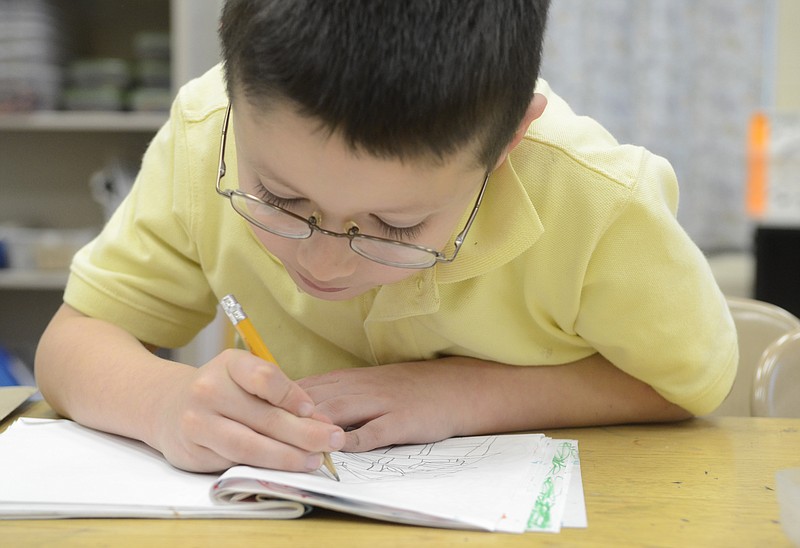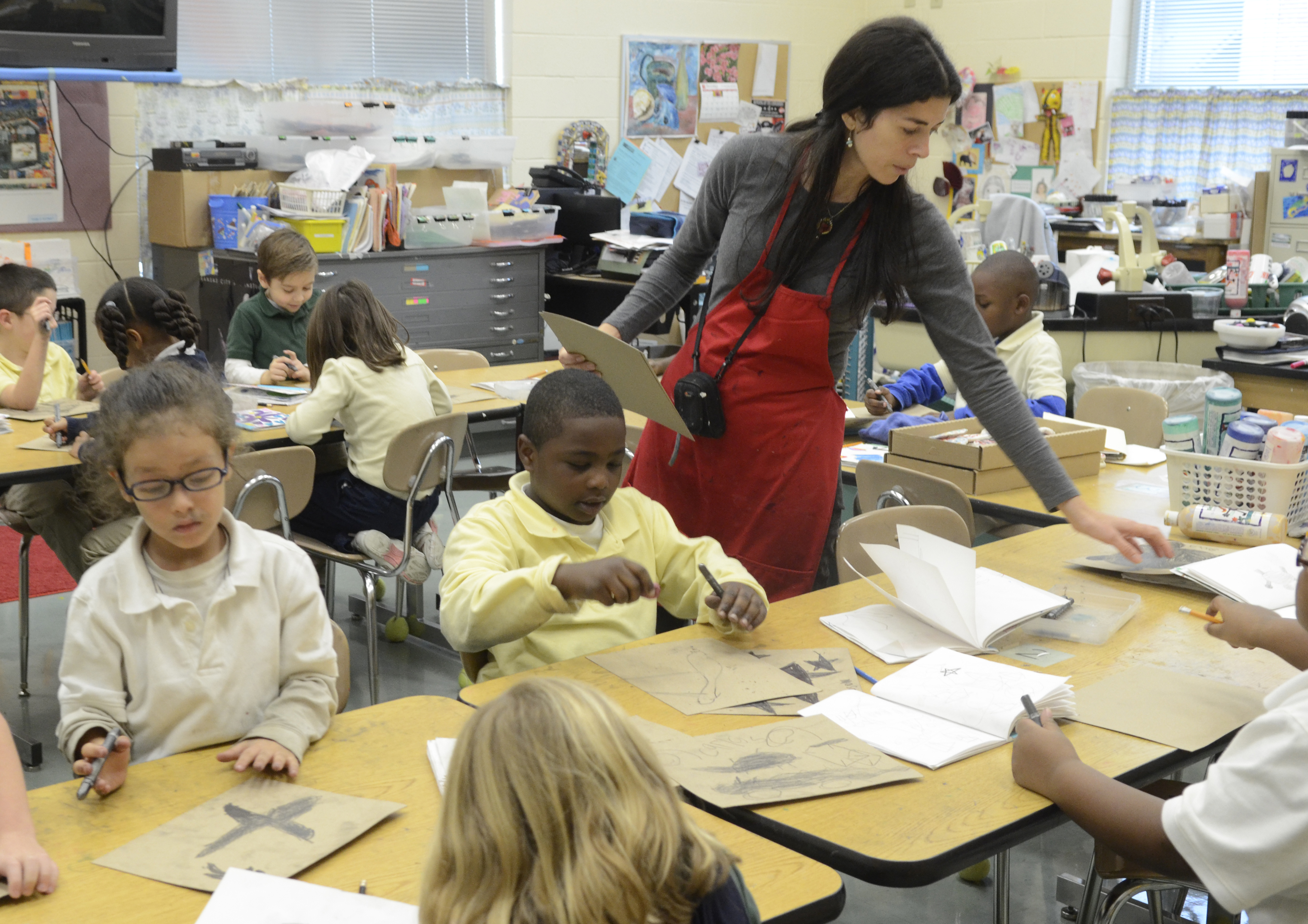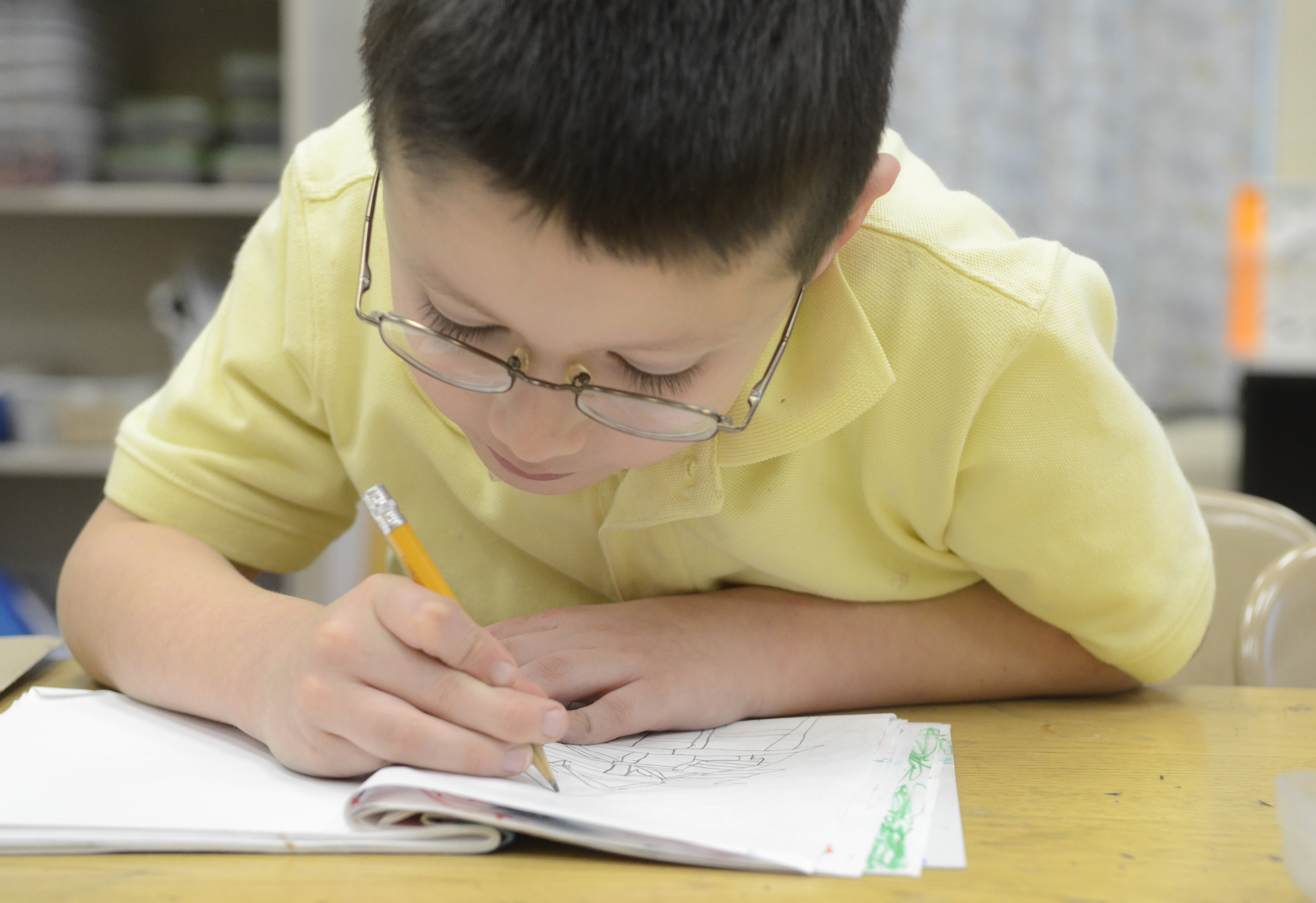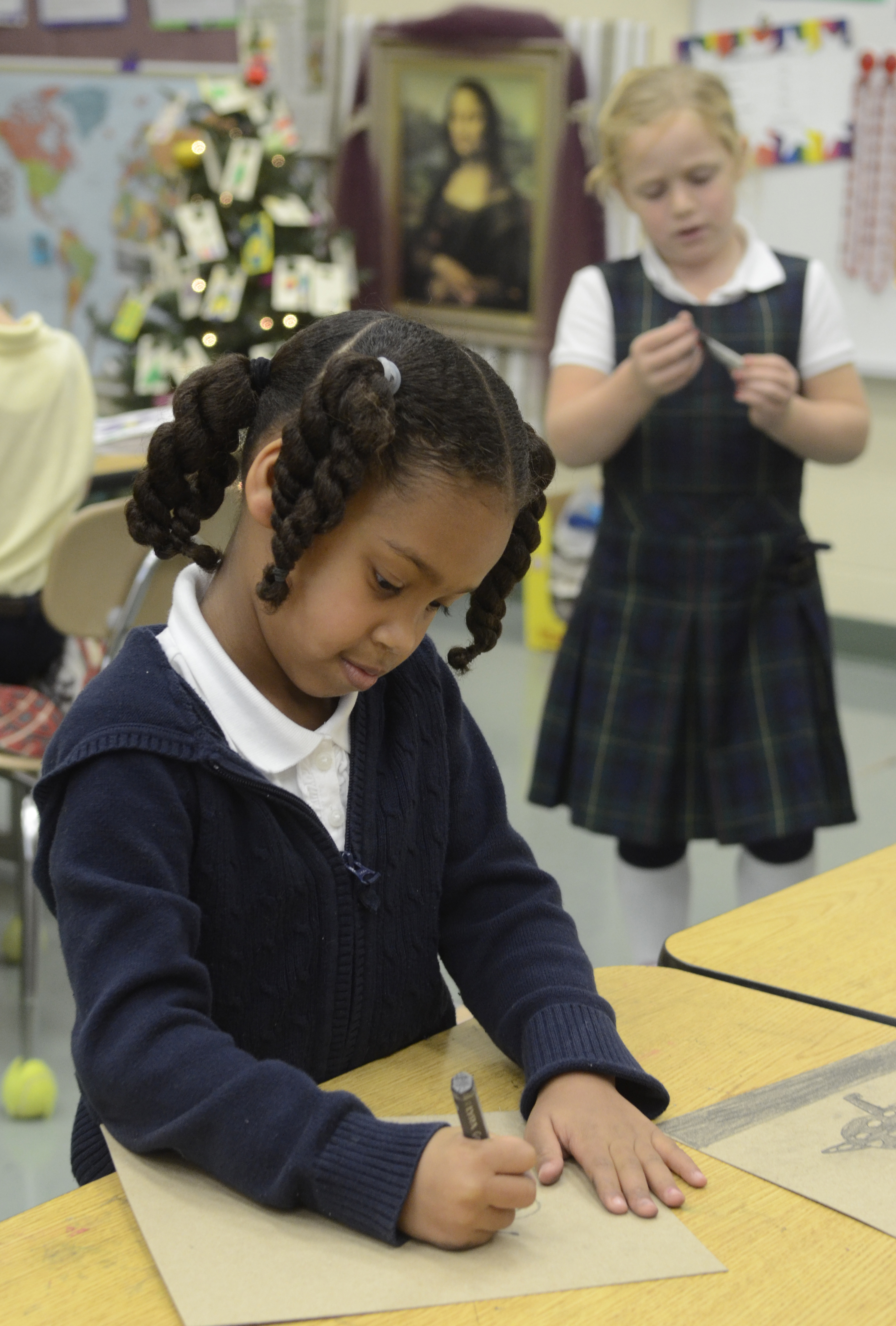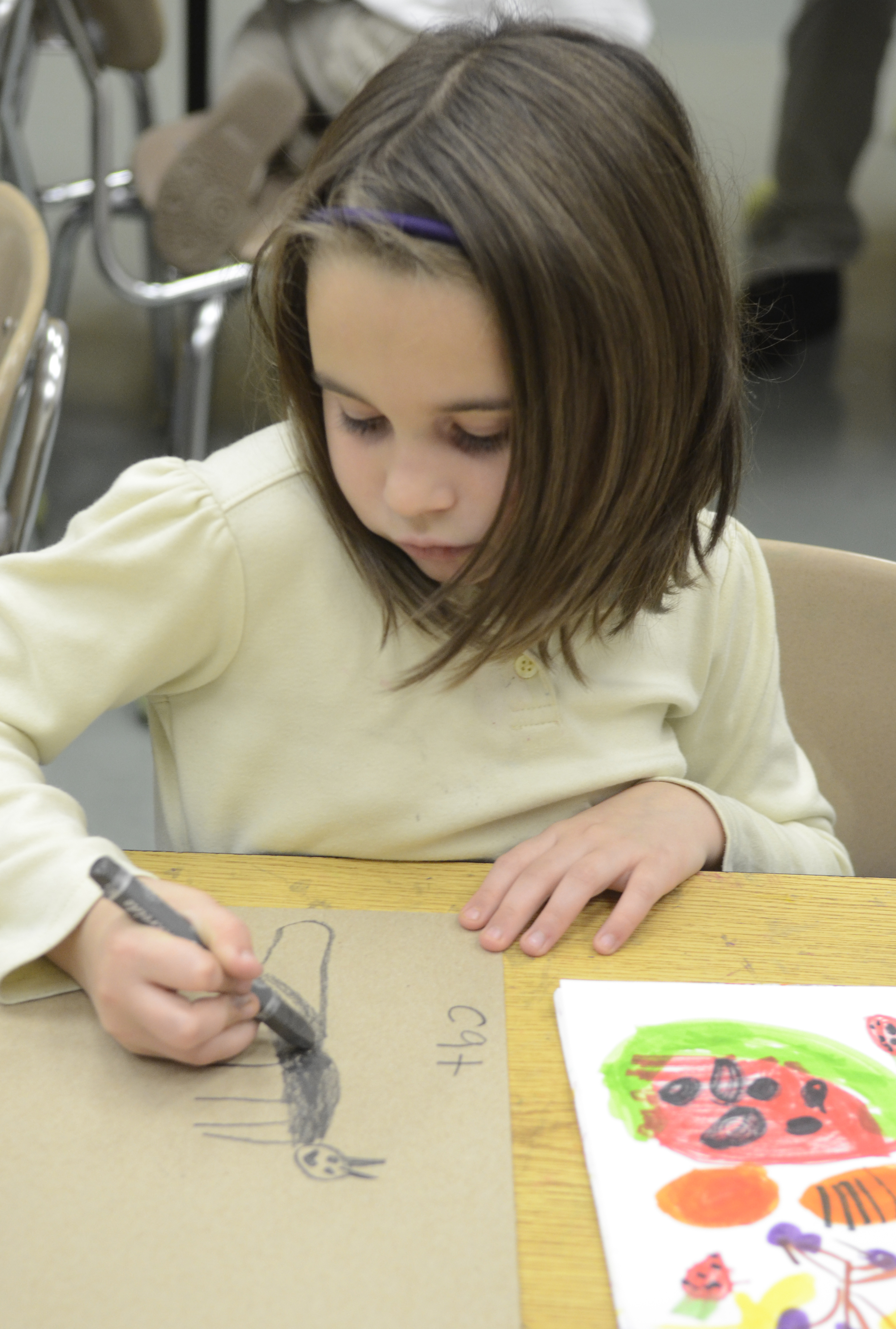VISUAL ARTS TEACHERSElementary positions funded by Hamilton County• Barger Academy• Battle Academy• Brown Academy• Normal Park Museum MagnetElementary positions funded by PTA• Thrasher Elementary• Nolan Elementary• Lookout Mountain Elementary• Big Ridge ElementarySource: Allied Arts
Elementary schools that don't integrate painting, dancing and acting into their curriculums are setting students up for faulty imaginations and lower test scores, arts activists say.
Of 44 elementary schools in Hamilton County, only eight have full-time visual arts teachers, and four of those are funded by parent-teacher associations. They get $100 for supplies from the school and typically pay $500 to $1,000 out of their own pockets for paintbrushes, canvases, paint and materials, supporters say.
"We are the only major system in the state of Tennessee that doesn't have a certified art teacher in every elementary school," said Karla Riddle, director of innovative programs for Hamilton County Schools. "When they say you have to lose a position, the first they look at is art."
Officials with cultural development group Allied Arts said an investment of nearly $300,000 is needed to reverse a trend of uneven and underfunded art education.
The group is pushing to launch a program to train teachers how to use the arts to drive home tough concepts in English, math or science. The program is modeled after one begun in Dallas a decade ago.
"Right now, we give students a lot of information and not a lot of depth," said Rodney Van Valkenburg, director of art education at Allied Arts. "With arts integration, you are touching on a lot of different subjects through an art form."
Research makes a strong case for using art in the classroom.
More than 62 studies show art helps learning in subject areas stick. It also has a positive outcome on habits of mind, self-motivation and social skills such as tolerance and empathy, according to a report by the President's Committee on the Arts and the Humanities.
The report quotes other studies showing that low-income students who participate in arts activities more than nine hours a week are four times more likely to achieve better in school, three times more likely to have better school attendance, and take part more in student government and math and science fairs.
Big thought
In Dallas, the Big Thought program pays $15 per student for art education through community and government partnerships. The program started in 13 elementary schools and took five years to grow to scale. Now it sends trained art advisers to every elementary school in Dallas to help teachers incorporate the arts in classes, said Gigi Antoni, president and CEO of Big Thought.
"We realized that affluent people were getting access [to art] but the poor and minorities weren't," she said. "It was the same people going to the same things. It's an equality issue."
Dan Bowers, president of Allied Arts, said the same is true here, but he believes the money and will are there to change that.
Organizations such as the Chattanooga Symphony and Opera worry that, as their patrons get older, they aren't luring a younger, new audience, Bowers said.
"Money is put into random acts of improvement, right now," he said. "The money is there [to start a program like the Big Thought] in the pockets of local businesses, in the pockets of local government. We can shuffle it from programs that are already funded. It's a systems approach. Once the investment is made you can look at synergy."
Painting planets
Antoni was brought in by the Imagine 2020 Cultural Initiative to speak about making arts education in schools a national model to Allied Arts board members, the University of Chattanooga Foundation, the local Rotary and school board members.
For instance, lessons on the solar system could use paintings to portray the planets. Dancers could teach about spatial relationships. Actors could reenact the journeys to the moon.
But implementation would take a commitment from the Hamilton County Board of Education.
Dallas, which didn't have a school art program for 30 years, now requires each elementary student get 90 minutes of art instruction, Antoni said. Facing a $40 million deficit last year, Dallas schools got rid of low-performing teachers but held on to art teachers, she said.
Nearly five years ago, the Tennessee Legislature passed a bill that called for all elementary schools to teach the visual arts and music.
But it was just an "unfunded mandate," Van Valkenburg said.
Merger cut arts
Before Chattanooga and Hamilton County schools merged in 1997, city schools had visual arts teachers in elementary schools but the county schools only had a few. After the merger, visual arts fell off and an arts-related central office position was cut.
Elementary students still get 40 minutes of music instruction each week. High school students must have an art credit to graduate, but the visual-arts options are slim, Van Valkenburg said.
"It's a real challenge because there is no curriculum to build on," he said. "They have never even picked up a paint brush before."
He said 78 percent of Hamilton County students will graduate without having a professionally led visual arts experience.
Science focus
Riddle oversees magnet schools and supervised the visual arts program under former Superintendent Jim Scales.
"Parents say, 'What can we do?'" Riddle said. "Funding is a huge, huge issue. It's not a real priority. A lot is being driven by the federal government, a focus on science, engineering, math and technology. [The arts] have never been much of a topic."
Still, teachers are hungry to find a way to plug their students into the arts.
Last year, Allied Arts provided tickets for all elementary school teachers and students to attend a production of "The Nutcracker." For third-graders, tickets were provided for a symphony experience.
Ninety-eight percent of schools participated, Van Valkenburg said.
Barger Academy students have a dance class. They lit up when they got to see "The Nutcracker" performed professionally, Barger visual arts teacher Stacey Alverson said.
"I think it is something to look forward to [for the students]. It's a part of their school day, but it's rich with history and tradition and cultural studies and story," she said. "There are memories made."
Van Valkenburg said other schools have part-time art teachers but are fighting to incorporate art in classwork. All teachers at East Ridge Elementary and Ooltewah Elementary have been trained in arts integration.
School board Chairman Mike Evatt said he likes the concept of arts integration, but it could be tough to get a program up and running across elementary schools.
"There are people who don't think the arts needs to be in schools," Evatt said. "Art has its place. ... To give the child a well rounded education, they need to be exposed to everything."
He said the only way to make a significant investment is to review priorities in next year's budget to see where money to support an arts program could be found.
